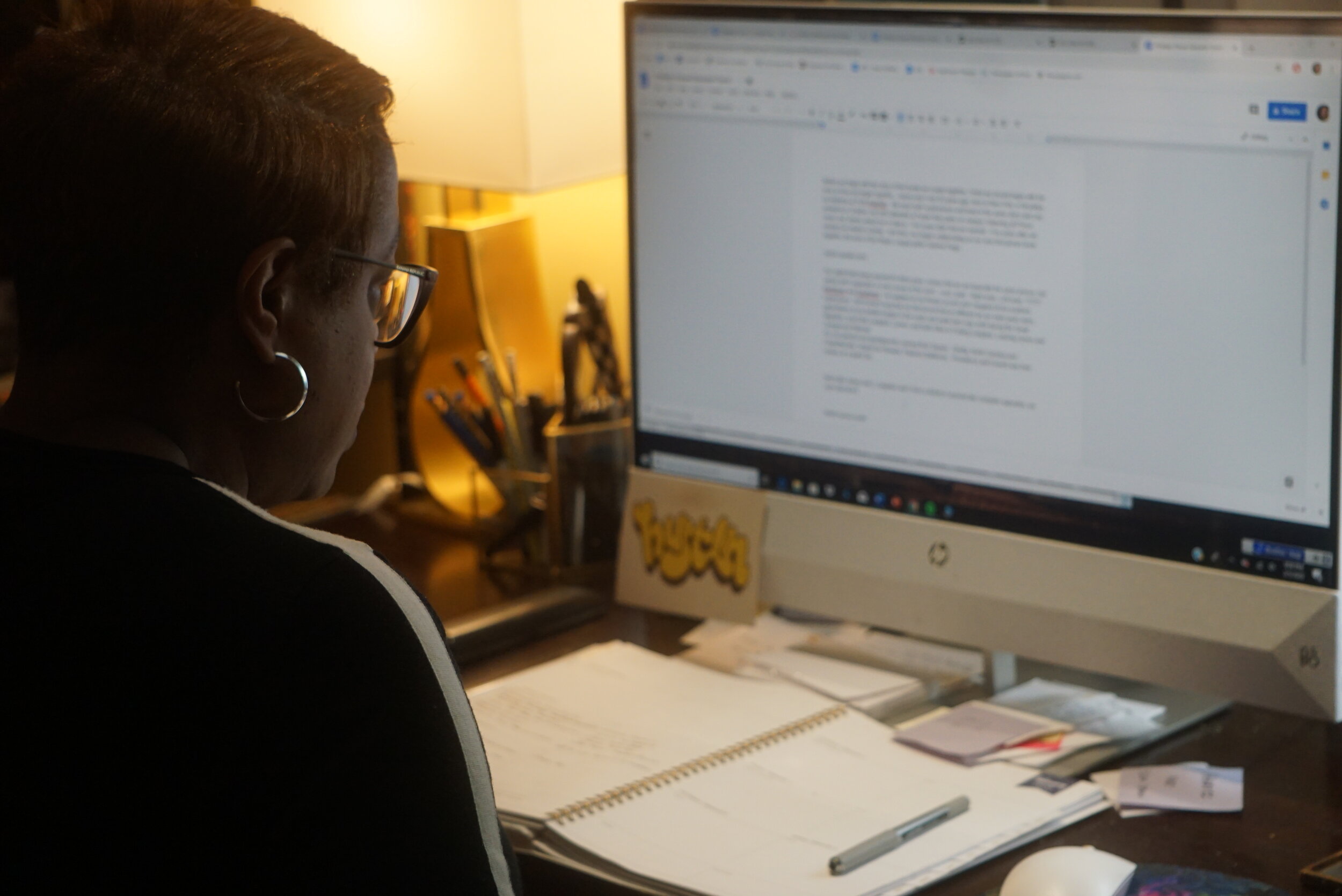B is for Bio.
Lesa Cline-Ransome is the award-winning author of numerous non-fiction and historical fiction titles for picture book, chapter book, middle grade and young adult readers. Her work has been named to ALA Notable Books and Bank Street Best Children’s Book lists.
Her verse picture book biography of Harriet Tubman, Before She Was Harriet was nominated for an NAACP image award and received a Jane Addams Honor, Christopher Award, and Coretta Scott King Honor for Illustration. Finding Langston, the first in the Finding Langston trilogy, was the winner of the Scott O’Dell Award for Historical Fiction and received the Coretta Scott King Award Author Honor. Her picture book, They Call Me Teach, received the 2025 Jane Addams Award. Her MG novel-in-verse, One Big Open Sky, was recipient of the Newbery Honor and Coretta Scott King Award Author Honor, as well as being named a Best Book of 2024 by Kirkus, the Boston Globe, and the New York Times. For Lamb, her debut YA historical fiction novel set in Jim Crow Mississippi, received four starred reviews and appeared on numerous Best of the Year lists.
A MacDowell Fellow and 2022 NAIBA Legacy recipient, Lesa has received numerous honors and awards including the NAACP Award, Kirkus Best Book, New York Public Library Best Book, SLJ Best Book, ALA Notable, CBC Choice Awards, two Top 10 Sports Books for Youth, and an Orbis Pictus Recommended Book.
She is currently an SCBWI Advisory Council Member and host of KidLitTV's Past Present: Giving Past Stories New Life.
She lives in the Hudson Valley region of New York with her husband and frequent collaborator. They are parents of four incredible humans.
FAQ’s
1. What is your favorite word?
Serendipity. Which means a happy accident. It sounds like a roller-coaster ride. Like singing a song. Like an ice cream flavor. Just lovely and fun and playful.
2. Did you always want to be a writer?
First I wanted to be a veterinarian, then a farmer, a librarian, and an Olympic athlete racing in the 200 meter. I have worked as a fashion copywriter, a teacher, a publicist and a full time mom, but a writer? Not so much. For a long time, even though I was an avid reader, I never really thought about writing books as full-time job. My writing was always encouraged in school and college, but it wasn’t until I began graduate school in Elementary Education at New York University and my husband, illustrator James Ransome began illustrating, that I started thinking about writing books for young readers. Of course now I can’t imagine doing anything else.
3. What do you do when you’re not writing?
I spend an awful lot of time writing but I do love listening to music live, on vinyl, singing loudly in the car, and in the kitchen while dancing and cooking dinner. I also love puzzles, anagrams, playing board games and watching movies, but my two favorite things to do are reading and hosting family dinners with my four children and my extended family and spending hours at the table eating, laughing and talking.
4. Who are your favorite writers?/Which writers inspire you?
So many writers, so little time. I love writers across all genres and here are just a sampling of many: Toni Morrison, Gary Paulsen, Jesmyn Ward, Renee Watson, James McBride, Carole Boston Weatherford, Christopher Paul Curtis, Kent Haruf, Ntozake Shange, Tonya Bolden, Laurie Halse Anderson, Pamela Muñoz Ryan.
5. What is it like working with your husband?
When people hear that my husband, illustrator James Ransome, often illustrates my picture books, I think they like to imagine the two of us, side by side, poring over a manuscript I have written, and then making our way to James’ easel to discuss each of the the paintings James will create. The truth is that the only time we truly collaborate is when we are brainstorming projects to work on together, usually over breakfast or dinner or while running errands. Other than that, I work in my office and he works on the opposite side of the house in his studio. Typically after I complete a manuscript he begins illustrating, sometimes 1–2 years later, at which point I have forgotten most of what I have written.
6. How do you choose your topics?
Curiosity is the reason I choose most of my topics. Writing has been a wonderful way to learn more about fascinating historical events I never learned about in school—The Great Migration, pit schools, sharecropping, sundown towns, the Port Chicago Disaster, the Negro Leagues, Pullman Porters, The Chicago Defender newspaper—and so many other events that helped to shape American history. Each of these events have taken center stage in my books and my world has been enriched in the process.
7. What is your advice for aspiring writers?
Read and write often. It’s just that simple. Each time you pick up a book, you are teaching yourself how to write.




